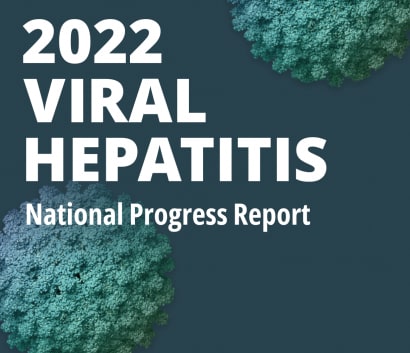2020 Viral Hepatitis Surveillance Report
Tens of thousands of people are newly infected with viral hepatitis every year in the United States. It is a serious public health threat that kills thousands of Americans annually and is a leading cause of liver cancer. Hepatitis A and hepatitis B are vaccine-preventable and hepatitis C can be cured. The Viral Hepatitis Surveillance Report – United States, 2020 represents the ongoing, systematic collection, analysis, and interpretation of viral hepatitis-related data. The surveillance process is essential to monitor trends that inform planning, implementation, and evaluation that are needed to reverse increasing current trends and improve viral hepatitis public health policy and practice.
Hepatitis is an inflammation of the liver most often caused by a virus. In the US, the most common types of viral hepatitis are hepatitis A, hepatitis B, and hepatitis C. While each can produce similar symptoms, each hepatitis virus affects the liver differently, has different routes of transmission and infection, and typically affects different populations.
Fortunately, effective vaccines are available to help prevent hepatitis A and hepatitis B. Although no vaccine is available for hepatitis C, life-saving treatment can cure the virus. Learn more about the different viral hepatitis types.
The findings in this report should be interpreted with caution. The number of viral hepatitis cases reported to CDC in 2020 may be lower than in years before the COVID-19 pandemic began. This decrease may be related to fewer people seeking healthcare and being tested for viral hepatitis during the COVID-19 pandemic.
Hepatitis A Cases Decreased during 2020
After annual increases during 2015–2018, hepatitis A cases decreased 47% from 2019 through 2020.
Acute Hepatitis B Cases Abruptly Decreased during 2020
After a decade of stable rates, the rate of acute hepatitis B abruptly decreased by 32% after 2019.
Acute Hepatitis C Cases Increased during 2020
The incidence rate of acute hepatitis C has doubled since 2013 (124% increase), and during 2020 increased 15% from 2019.

Health Equity Takeaways from the 2020 Viral Hepatitis Surveillance Report
Rate of Chronic Hepatitis B Cases is 12x Higher in API Populations
The rate of newly reported chronic hepatitis B cases among Asian/Pacific Islander (API) persons was almost 12 times the rate among non-Hispanic White persons.
Rate of Hepatitis B-Associated Deaths is Highest in API Populations
The death rate with hepatitis B among Asian/Pacific Islander (API) persons was nearly 9 times the death rate among non-Hispanic White persons.
Acute Hepatitis C and Injection Drug Use as a Risk Factor
Among the 32% of reported acute hepatitis C cases that included risk information for injection drug use, 66% reported it.
Rate of Hepatitis C-Associated Deaths is Highest in AI/AN and Non-Hispanic Black Persons
The death rates with hepatitis C among American Indian/Alaska Native (AI/AN) persons and non-Hispanic Black persons were 3.2 times and 1.8 times higher, respectively, than among non-Hispanic White persons.
Centers for Disease Control and Prevention. Viral Hepatitis Surveillance Report – United States, 2020. https://www.cdc.gov/hepatitis/statistics/2020surveillance/index.htm. Published September 2022. Accessed [date]



